If you purchase an independently reviewed item through our site, we earn an affiliate commission. Read our affiliate disclosure.
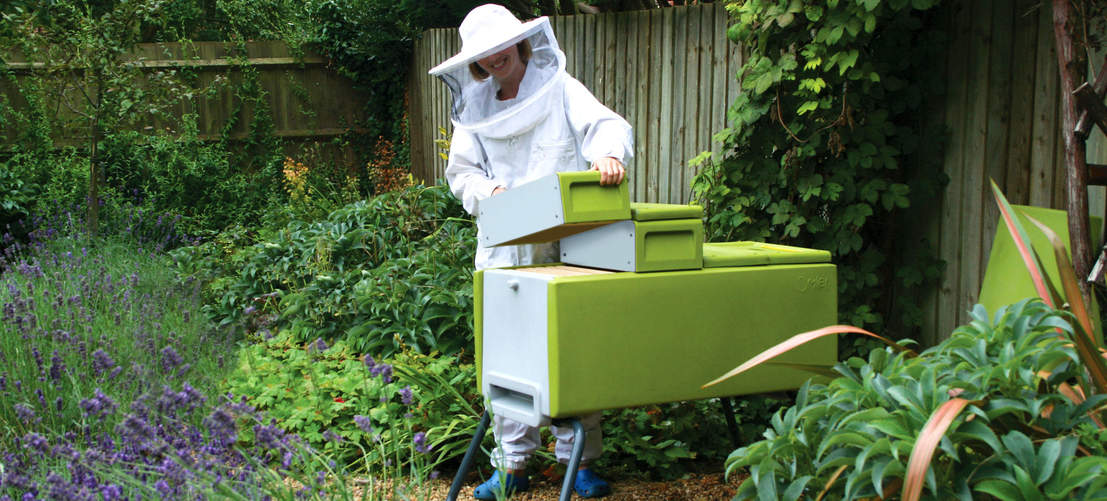
Beekeepers have certainly come from far. Just not long ago, beehives were extremely basic. Beekeepers would utilize a log that a swarm had abandoned. Some would use mud, straws or wooden containers to raise bees as well. These honeybee homes however proved to be unsustainable. Beekeepers had to come up with better hive boxes through trial and error. Thanks for all that effort, we can now enjoy the many styles and designs of beehives available in stores. A uniquely designed beehive that has been gaining traction among beekeepers is the Beehaus beehive. If you have been thinking of getting started in the venture of apiculture, or simply need to try out something new, then perhaps this hive can be worth trying. As always, it is important to learn about any equipment before investing in it. That precisely explains why we will discuss the Beehaus beehive in this article.
About the Beehaus Beehive
The Beehaus beehive is a relatively new design that makes beekeeping easy in gardens or rooftops. It can be best described as a modern home for honeybees. It is made of plastic, unlike other hive designs that are made of wooden material.
This modern hive contains everything that honeybees need therefore making it an excellent kit for both beginners and professionals. It is suited for both city and country beekeepers. If you have never felt the fun and reward associated with keeping bees, then this modern hive may bring all that to reality. Despite being made from plastic, its design tries to mimic the design of a natural wild beehive, to provide a comfortable home for domesticated honeybees.
Components of the Beehaus Beehive
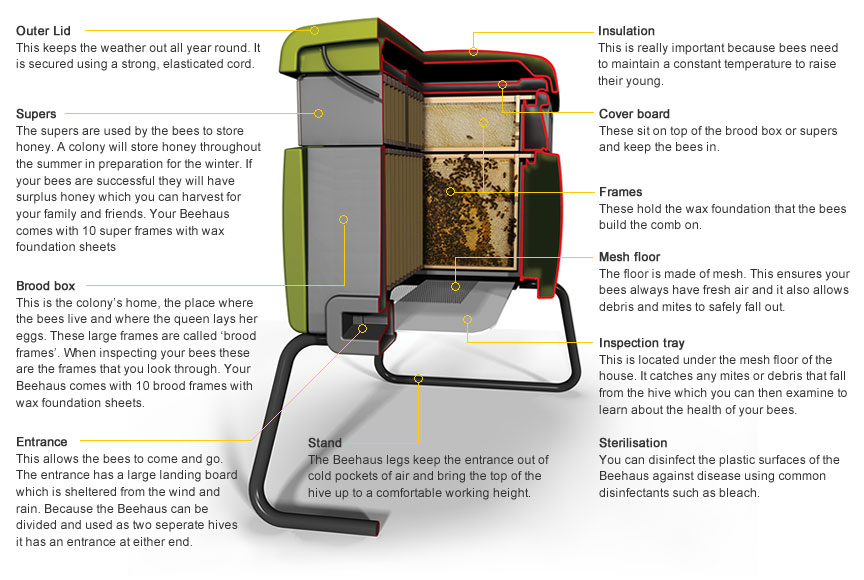
As earlier mentioned, the Beehaus beehive is designed in a way that mimics the wild honeybee hive. Bees in the wild utilize suitable places such as tree crevices, holes in rocks, tree trunks, and many others.
This modern beehive comprises the following components:
1. Outer Lid
This is held tightly in place by an elasticated cord. It secures the hive and honeybees from weather elements all year round.
2. Insulation
Temperature level within the beehive has a huge impact on honeybees. As a matter of fact it affects their behaviour. Insulation helps maintain the temperature within the recommended level which guarantees optimum productivity in the honeybees.
3. Supers
The supers act as storage compartments for honey in preparation for seasons of dearth. The colony will accumulate honey in the supers throughout summer as it prepares for winter. Any surplus honey produced by the honeybees can be harvested for home use or commercial purposes. The Beehaus beehive contains 10 super frames that have wax foundation sheets.
4. Cover board
This lies between the brood box and the insulation. It also sits on top of the supers and helps keep the bees inside the box. It helps keep the bees from filling the outer cover with propolis.
5. Brood box
The brood box is the lifeline of the honeybee colony. It is ideally the home where the bees live and young ones are raised. The queen bee lays eggs in the brood box. The Beehaus beehive comes with 10 brood frames that have wax foundation sheets.
6. Frames
The wax foundation is kept in place by the frames, making it possible for the honeybees to build the combs.
7. Stand
This helps keep the box at an elevated position, making it easy for the beekeeper when working on the beehive. It also helps keep the box entrance away from the cold air that can easily get into the beehive. The legs are sturdy and provide sufficient space for keeping tools when working on the hive.
8. Entrance
The Beehaus hive entrance has a landing board that is sheltered from rain and wind. It acts as an entry and exit point for the honeybees. There are two entrances in this hive since it can be used as two separate hives. A stainless steel entrance block is also available and is used for the temporary closure of the hive. A wasp guard also helps support the bees in defending the colony from wasp attacks.
9. Mesh floor
An excellent addition to the Beehaus beehive that helps provide free circulation of fresh air within the hive. It also helps keep varroa mites out of the box. Debris and small particles also fall out of the hive through the mesh floor into the inspection tray.
10. Inspection tray
This is found below the mesh floor and acts as a trap for debris, small particles and mites. These can be further examined and will help ascertain the condition of the honeybee colony.
Hive dimensions
From the exterior, the top of the hive measures 58cm x 101cm x 54cm, that is width, length, and height respectively. The height from the ground through the stand to the top of the beehive is 92.5cm. The length between the stands is 114cm with each stand measuring 72cm x 38.5cm in width and height respectively.
Beehaus Beehive Extras
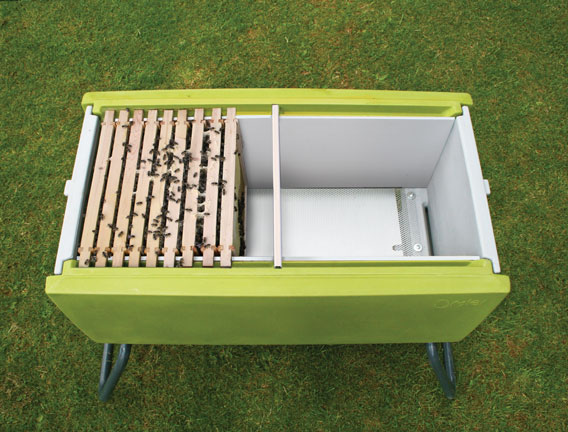
In addition to the Beehaus hive components, are the free extras that come with every box procured. Remember the hive is comes as a complete package and ready for use. The extras include:
- 4 supers – each of the supers can hold 5 frames with a capacity of holding between 7 to 8 kilograms of honey.
- 4 cover boards – that will be fitted on top of supers so that the honeybees are sealed in.
- 2 clear boards – used for emptying bees from supers. Can also serve as feeders for the honeybees.
- Frames – 10 deep and 10 super frames that include wax foundation.
- 4 queen excluders – that helps keep the queen in her right place and avoid laying eggs on the supers.
- A hive divider – that can be used to split the Beehaus into two independent hives.
- 2 hive blockers – used to block the entrance to the beehive to keep off invaders such as wasps.
- Mesh floor – for maximum aeration of the beehive and also to prevent a pathway for mites and debris to fall into the inspection tray.
- Inspection tray – collects any unwanted material or insects that drop out of the beehive.
- Guide – a free guide for the beekeeper, fully packed with useful information to help you when raising your bees.
- 4 Honey jars – these will come in handy once the honeybees begin to produce honey. You can use the jars for honey storage or even use them to package honey for sharing with your friends.
Benefits of a Beehaus Beehive
The Beehaus is a unique beehive unlike any other. Some of its benefits include:
1. 10 Brood frames
These are large frames where the honeybees live and the brood is raised. This makes it possible to optimize honeybee colony productivity.
2. 10 Super frames
This provides sufficient honey stores to feed the colony during the winter months. It also helps store surplus honey that can be harvested for home or commercial uses.
3. Inspection
This has been made easy by the inspection tray found under the mesh floor. This will help examine debris, faeces, or mites that accumulate there. This will help diagnose mite infestation or any other disease or pest infestation.
4. Hive stand
Makes it easy to access the beehive during routine maintenance or honey harvesting. It also helps prevent cold winds from getting into the beehive.
5. Twin wall insulation
An all-round double layer wall in the beehive helps guarantee to require insulation during winter and cool summer months. This helps the honeybees in maintaining the temperature within the required 35 degrees Celsius. The honeybees instinctively regulate the colony temperatures through the action of their wings. These act as fans that circulate cool air within the beehive. This action also comes in handy when the colony is invaded by their enemies such as yellow jackets.
6. Excellent ventilation
This beehive provides the best ventilation to the honeybees courtesy of the mesh floor. This helps allow fresh air to flow in and out of the hive. Furthermore, the mesh helps keep the honeybees healthy since unwanted debris and mites fall out through it.
7. Excellent design
The beehive has a compact design that will easily fit any spot within the garden or rooftop. It also comes in so many colon options to meet your preference. The hive can also add some beauty to your garden or rooftop.
8. Versatility
It is designed to meet the needs of everyone, making it possible for beekeeping enthusiasts to keep bees anywhere. Both upcountry and city folks will find it practical to use. You can raise bees successfully in your modern garden or spacious upcountry land using this beehive.
9. Spacious
The Beehaus is compatible with National Frames of 14 x 12 inches, thus providing sufficient space for a huge honeybee colony. This means the box can house more bees instead of splitting colonies. The ultimate benefit of this is the easy inspection of honeybees under one roof. It also eliminates frequent disruptions encountered when honeybees are raised in double brood boxes. Therefore, honeybees tend to be more calm and easier to work with when raised on this modern beehive.
10. Dual Purpose hive
The Beehaus is a two-in-one beehive with two entrances. The box has entrances on both sides. The interior of the hive has enough room for 22 frames, meaning double the number of frames in traditional hives. The number of honeybees will increase dramatically during spring and these usually take up the required space within the box without swarming. However, you may also split the honeybee colony into two if you like.
11. Transportation made easy
Beehaus super boxes are half the size of what you find in a standard or traditional beehive. What this means is that the box is much lighter even when frames are fully filled with honey.
12. Sterilization
The design of this hive makes it possible to disinfect the plastic surfaces using recommended disinfectants.
Pros and Cons of a Beehaus Beehive
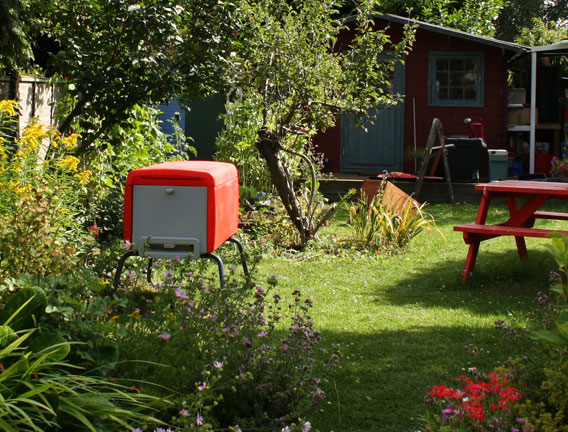
Pros
- Easy to use.
- A practical choice for those in urban areas.
- Large brood and super frames for optimum honey production and brood development.
- A two-in-one beehive for raising successful honeybee colonies.
- Well-sheltered to keep off weather elements.
- Makes hive inspection easy.
- Well designed to keep out mites and unwanted debris.
- The sheltered landing board helps keep the entrance dry throughout and ensures the honeybees are kept dry when entering the hive.
- The outer lid is kept strongly enclosed by the elasticated cord.
- Provides excellent insulation to maintain temperatures within required levels.
- Guarantees excellent aeration to keep the bees healthy.
- Lightweight and easy to carry.
- Enough space for the entire honeybee colony.
Cons
- Made of plastic instead of wood.
- Relatively new in the market hence not everyone will readily accept it.
Setting up a Beehaus Beehive
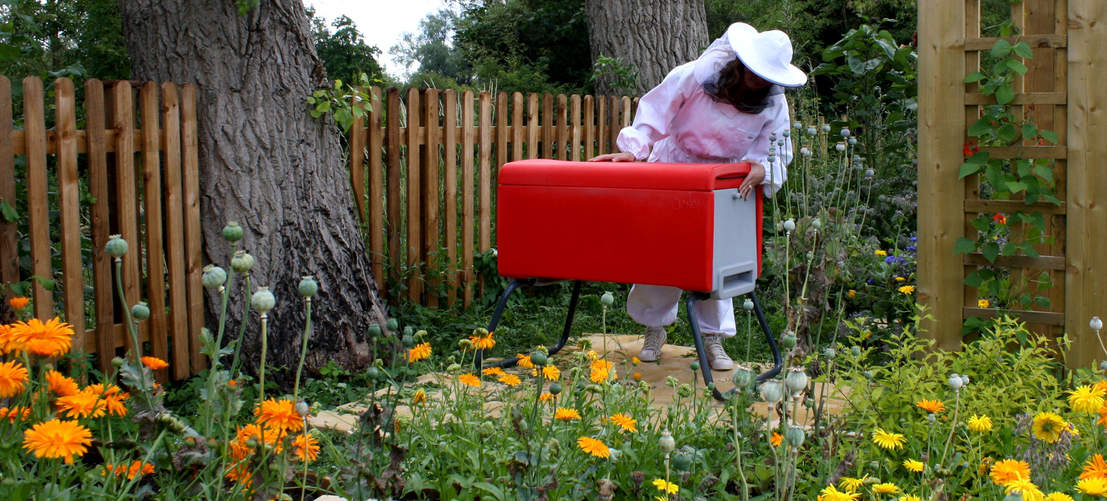
Honeybees are extremely sensitive to external interferences such as traffic, human, or weather elements. You should therefore choose an ideal spot for your beehive, irrespective of whether you reside in the city or upcountry.
An ideal location for the Beehaus is against a fence or hedge. This will act as a buffer against rain and wind. The hive entrance should also be positioned in such a way that the honeybees can fly in a straight line. Subsequently, frequently used paths should be avoided and quiet spots chosen instead.
It is also worth considering your neighbours while setting up the Beehaus beehive. Bees fly naturally at head height, that is, at about 5m above the ground. The hive should therefore be kept close to a 2m fence of the hedge so that the honeybees can fly within the recommended height above ground.
Rooftops make the best spots for those residing in cities. You do not need much to keep the honeybees off ground level. The fact that the beehive is on a rooftop avoids many problems, making it easy for the bees to fly in and out of the hive without any distractions.
What Makes an Ideal Home for Bees?
Successful beekeepers understand the basic housing for honeybees, and that is why they are successful. Bees instinctively create a favourable environment for raising their young and keeping food reserves for the hard seasons. Wild bees have adapted over the years and independently manage their colonies. As for domesticated honeybees you have to ensure the beehive location and condition meet the requirements.
You can raise healthy and productive colonies by providing the basic housing requirements that include:
1. Safety and shelter
Honeybees are a target of many predators and pests. These include wasps, rats, skunks, raccoons, bears, birds, and so many others. Unfavourable weather elements also pose a serious threat to honeybee colonies. The bees should therefore be well sheltered and protected from these threats.
2. Space for growth
Honeybee colonies need sufficient space for nurturing their young and expanding the colony. Bigger and strong colonies have a higher chance of surviving the many threats that target the honeybees. Lack of enough room for expansion will force the honeybees to split and swarm.
3. Good ventilation and dry condition
Good and fresh air supply in addition to dry housing provides an ideal habitat for honeybees. Wet conditions provide an excellent ground for pathogens and diseases to thrive posing a risk to honeybee colonies.
4. Source of water and nectar
Honeybees require a nearby supply of fresh water. Flowers also should be provided in plenty within close proximity, since these are the sources of nectar and pollen. Honeybees also collect propolis from plants and this acts as a disinfectant within the colony. Nectar and pollen are the basic food for honeybees. Nectar is used for making honey, whereas pollen is used for making bee bread which is the main source of protein, fats, and lipids for the colony. Pollen is also rich in vitamins and minerals. It is an excellent food for young bees.
Conclusion
Understandably, beekeepers are known for their experimentation in almost everything. You might as well choose to experiment with your own unique design of a hive. Nonetheless, it is worth noting that commercial hives include accessories that are compatible with standard hives. That means they make your work so much easier, especially if you need to transfer honeybees from one hive to the other.
It is important to consider your preferences when choosing a hive. Some hives may be too heavy and others a bit lighter. You can also evaluate your motivation for engaging in the beekeeping business. If the main motivation is for producing honey for commercial purposes, then it would be wise to choose a hive such as the Langstroth that facilitates easier expansion. Apparently, considering most of the criteria for choosing a hive, the Beehaus appears to meet most of them and thus makes a good choice.
For more information about purchasing the Beehaus beehive, you may visit omlet.co.uk.
What are your thoughts on the Beehaus beehive? Leave a comment below and let us know.
 BeeKeepClub Resources and Guides for Beekeepers
BeeKeepClub Resources and Guides for Beekeepers
